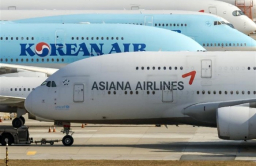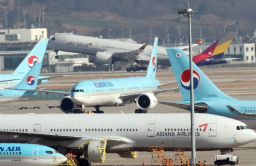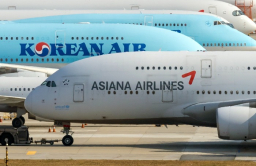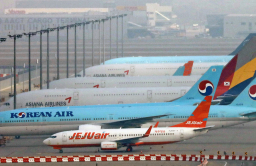-
KOSPI 2577.27 -2.21 -0.09%
-
KOSDAQ 722.52 -7.07 -0.97%
-
KOSPI200 341.49 +0.02 +0.01%
-
USD/KRW 1396 -2.00 0.14%
Korean Air changes badge before full integration with Asiana Airlines
Airlines
Korean Air changes badge before full integration with Asiana Airlines
This is South Korea’s No. 1 flag carrier’s first corporate identity change in over 40 years
By
Mar 11, 2025 (Gmt+09:00)
3
Min read
News+
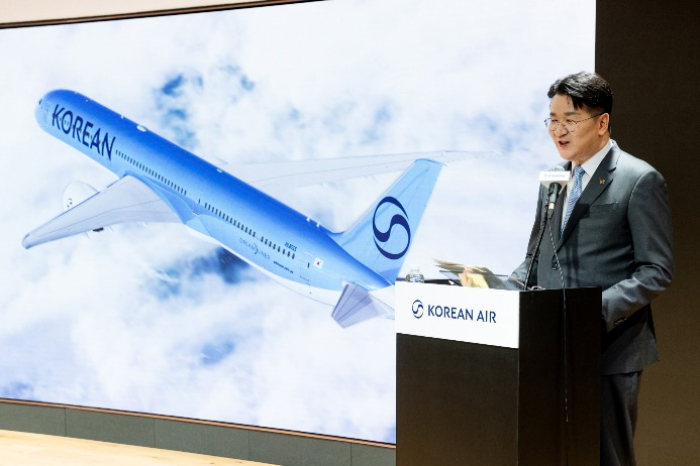
Korean Air Lines Co., South Korea’s largest full-service carrier, has undergone a major makeover of its corporate identity (CI) for the first time in more than four decades in the lead-up to its perfect marriage with smaller rival Asiana Airlines Inc.
“Korean Air’s new logo, which is the first change in 41 years, will play a central role in uniting Korean Air and Asiana Airlines,” Chairman and CEO of Korean Air Cho Won-tae said on Tuesday at a press conference in Incheon, where he introduced Korean Air’s new CI.
Korean Air unveiled its new brand typography, "KOREAN AIR," in a cleaner and more contemporary font in a solid navy color. The "KOREAN" on the fuselage is almost twice as big as the previous version.
The new badge retains the iconic taegeuk, the traditional Korean symbol that has represented the airline since its founding, but now features a sleeker and more modern design.
Its livery is also refreshed, mostly with the branding layout, while keeping its signature sky-blue color with a metallic touch.

The rebranding comes at a time when Korean Air is striving to cement its position as one of the top global airlines after acquiring Asiana Airlines.
With the smaller rival under its wings, the No. 1 Korean flag carrier is expected to become the world’s 11th largest airline by annual passenger volume. It will also operate a total of 238 aircraft and employ some 27,000 staff.
GLOBAL NO. 11
The two airlines, once cross-town arch-rivals, are in the middle of the integration process after the European Commission, the region’s antitrust body, gave the final nod last November to their long-waited merger, which was followed by the US Department of Justice’s (DOJ) approval, the very last hurdle.
Korean Air will manage Asiana Airlines as a separate entity for two years, while undertaking a comprehensive integration process, including aligning corporate cultures and merging the two carriers' mileage programs.
Cho said Korean Air’s merger process with its 30-year rival "is going without a hitch."
“We plan to offer a combined mileage system that can meet expectations of both airlines’ customers,” said the Korean Air chairman.
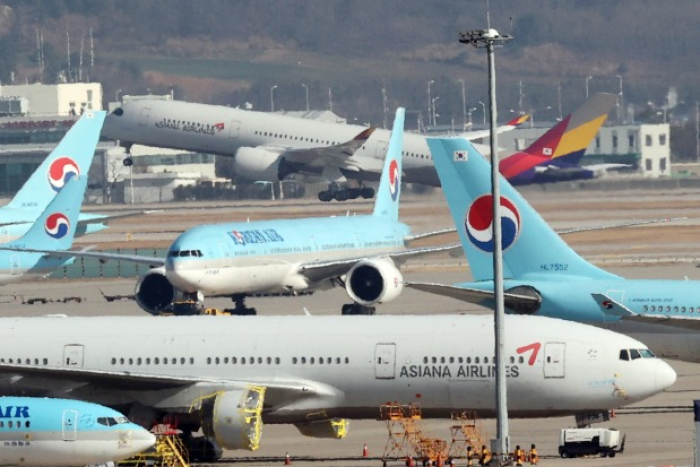
The two airlines’ marriage received conditional approval from Korea’s antitrust watchdog, the Fair Trade Commission (FTC), in 2022.
Of several requirements, they should not change their mileage systems in a way that puts their customers at a disadvantage.
Korean Air plans to submit the two airlines’ mileage consolidation ratios to the FTC in the first half of this year.
They also relinquished airport slots and traffic rights on some of their lucrative routes. Further, they are banned from raising flight rates, slashing the number of flight seats or reducing services such as free baggage allowance after they become one.
“My heart was heavy with responsibility rather than joy when the final EU approval came through,” said Cho. “As we are poised to become global No. 11, we will go all-out to become an airline that is fully embraced by our customers.”
Korean Air will treat both airlines’ employees “fairly” during the integration process, Cho said.
NO PLAN TO SELL AIR BUSAN

Following the merger, Korean Air plans to integrate its low-cost carrier, Jin Air, with Asiana’s two LLCs – Air Busan and Air Seoul – in phases.
Regarding looming speculations that it will sell off Air Busan, Cho said that is not planned.
“Air Busan is our family. Our goal is to become one,” said the Korean Air Chairman, expecting the budget airline to continue playing a major role in Busan, where a new international airport will open.
After their consolidation, the LLCs will continue to focus on short-haul routes where tourism demand is high, he said.
Korean Air will change the logo, typography and livery on its all flights, as well as its in-flight menus and amenity kits, in phases.
The first flight with the new logo will depart Incheon International Airport to Narita International Airport in Tokyo on Wednesday.
Korean Air has revamped its new corporate identity in the past three years to reflect “Korean Air's long-standing commitment to safety and customer satisfaction," said Cho.
Write to Jung-Eun Shin at newyearis@hankyung.com
Sookyung Seo edited this article.
More To Read
-
Dec 12, 2024 (Gmt+09:00)
-
Jun 03, 2024 (Gmt+09:00)
-
Jan 31, 2024 (Gmt+09:00)
-
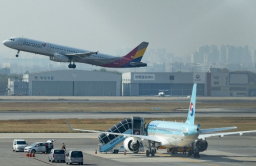 Mergers & AcquisitionsAsiana Airlines to sell cargo business for merger with Korean Air
Mergers & AcquisitionsAsiana Airlines to sell cargo business for merger with Korean AirNov 02, 2023 (Gmt+09:00)
-
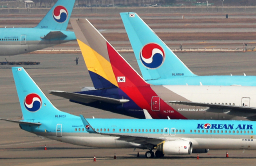 Mergers & AcquisitionsKorea approves Korean Air-Asiana merger; hurdles remain
Mergers & AcquisitionsKorea approves Korean Air-Asiana merger; hurdles remainFeb 22, 2022 (Gmt+09:00)
-
Nov 16, 2020 (Gmt+09:00)


